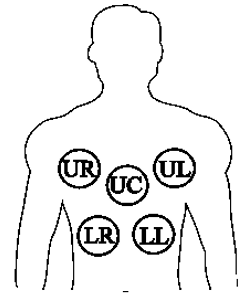Combined Thoracic Injury (CTI)
Overview
Combined Thoracic Injury uses chest deflection and chest acceleration that was first proposed by Eppinger et al. [1].
Inputs
Signals:
- Chest Deflection (X)
- Chest Acceleration (X, Y, and Z)
Calculation
Calculation from Eppinger et al. [1],
- Filter the chest displacement (CFC = 600) and all chest accelerations (CFC = 180)
- Calculate chest resultant with the filtered signals
- Calculate maximum chest displacement
- Calculate the 3ms Clip of the resultant chest acceleration
- Calculate Criteria
Intercepts for CTI Calculation [2],
| ATD | Chest Acceleration Intercept | Chest Deflection Intercept |
|---|---|---|
| HIII - M95 | 83 | 114 |
| HIII - M50 | 90 | 103 |
| HIII - F05 | 90 | 84 |
| HIII - 6yo | 90 | 64 |
| HIII - 3yo | 74 | 57 |
| CRABI - 12mo | 57 | 50 |

Injury Criteria
Limits for Chest Acceleration and Chest Deflection [2],
| ATD | Chest Acceleration Limit | Chest Deflection Limit |
|---|---|---|
| HIII - M95 | 55 | 70 |
| HIII - M50 | 60 | 63 |
| HIII - F05 | 60 | 52 |
| HIII - 6yo | 60 | 40 |
| HIII - 3yo | 55 | 34 |
| CRABI - 12mo | 50 | 30 |
References
[1] Eppinger, Rolf, et al. "Development of improved injury criteria for the assessment of advanced automotive restraint systems." (1998).
[2] Eppinger, Rolf, et al. "Supplement: development of improved injury criteria for the assessment of advanced automotive restraint systems: Ii." (2000).